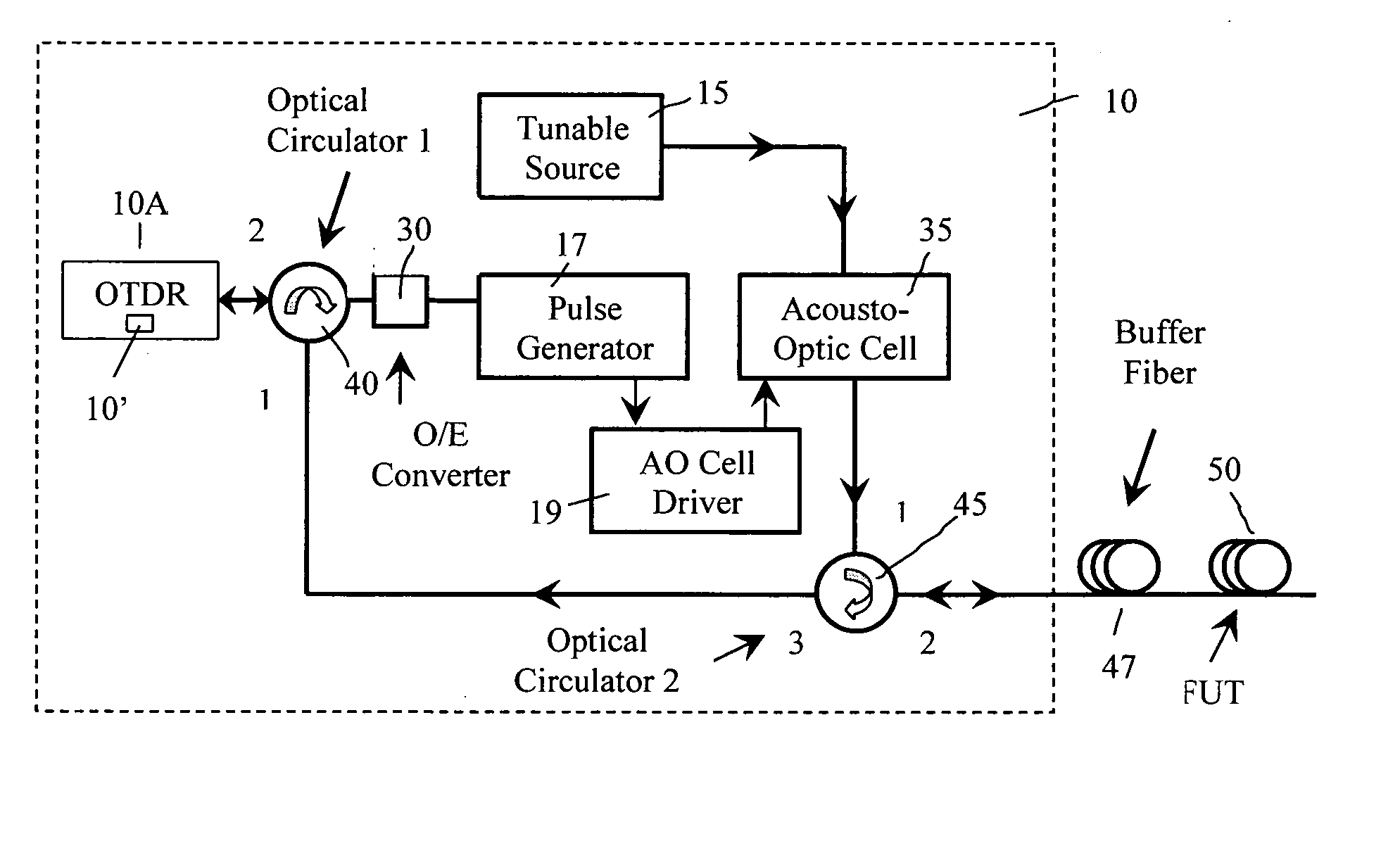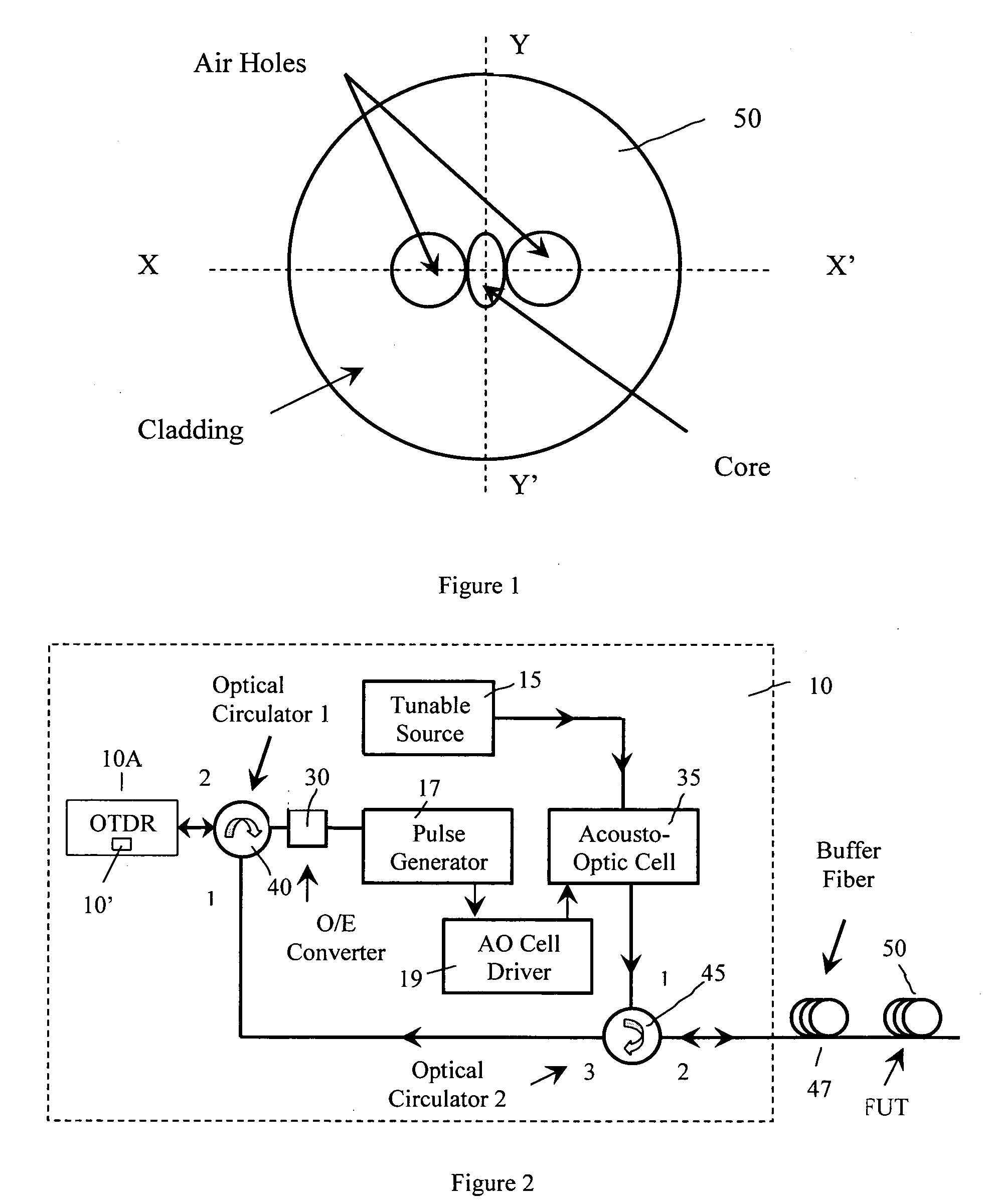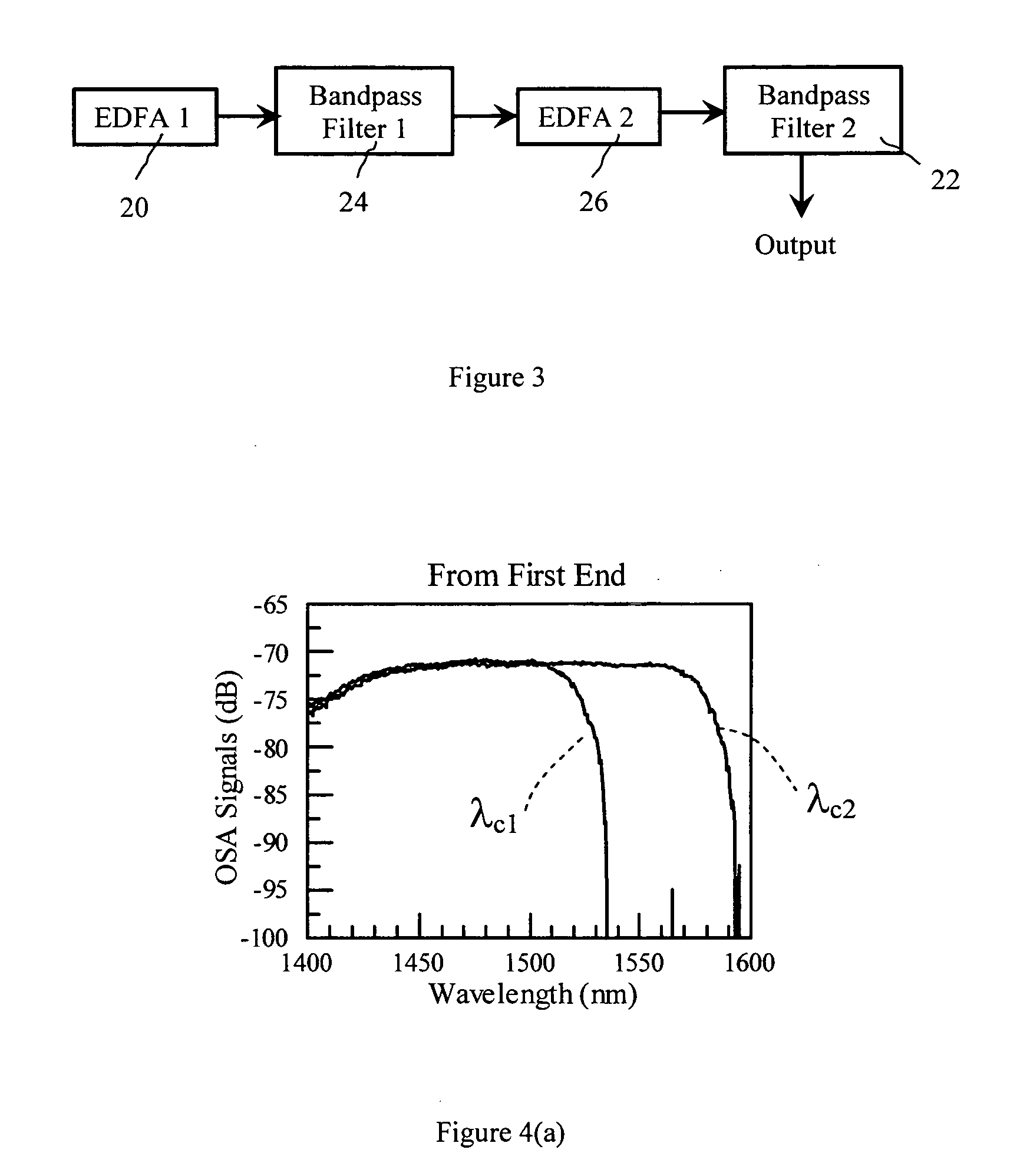Single polarization fiber and method of evaluating fiber cutoff wavelengths using optical time domain reflectometry
a single polarization fiber and optical time domain technology, applied in the field of single polarization fibers, can solve the problems of difficult to predict the precise length of the fiber segment, the measurement technique is destructive, and the inability to screen the cutoff wavelength of an entire length of fiber with the destructive measurement method
- Summary
- Abstract
- Description
- Claims
- Application Information
AI Technical Summary
Benefits of technology
Problems solved by technology
Method used
Image
Examples
first embodiment
of the Present Invention
[0049] In this embodiment, the method of measuring the fundamental mode cutoff of the single polarization fiber is achieved by using a tunable OTDR device 10 (see FIG. 2). Tunable OTDR device 10 is an OTDR device that can run OTDR operation at different wavelength (tunable wavelength) within a specified wavelength range. Tunable OTDR devices are not commercially available. In order to gain the wavelength tunability, we modify a commercial OTDR device 10A to produce a tunable OTDR device 10. The schematic illustration of one embodiment of the tunable OTDR device 10 is shown in FIG. 2, which includes a commercial OTDR device 10A that operated at a fixed wavelength of 1550 nm. To gain the wavelength tunability, we utilized a tunable wavelength light source 15, which outputs continuous wave (CW) light at a specified wavelength. This light will then be fed to a modulator, for example an acousto-optical cell, which provides a “chopping” action to create pulses of l...
second embodiment
of the Present Invention
[0056] In the above embodiment, we have measured the wavelength of cutoff 2 wavelength (λc2) as a function of the fiber position, and have been able to select the specific fiber of interest. With some modification to the above measurement method, we can measure directly the wavelengths corresponding to cutoff 1 (λc1). In order to achieve this goal, we modify the tunable OTDR device 10 illustrated in FIG. 2 by utilizing a rotatable polarizer 70 in the tunable OTDR device 10 as now illustrated in FIG. 7. The polarizer axis should be aligned with the fiber's birefringent (i.e., polarization) axis associated with the polarization mode of the shorter cutoff wavelengths λc1, so that no light associated with the polarization mode of longer cutoff wavelength λc2 is launched into the optical fiber 50. By properly aligning the polarizer orientation, we gain sole access to the polarization mode with longer cutoff wavelength λc2. The location (P1, not shown) of sharp dro...
third embodiment
of the Present Invention
[0059] The distributed cutoff measurement method can be used in conjunction with a preform that has a tapered core, to improve the yield of manufacturing of the single polarization fibers. First, we obtain or manufacture a fiber preform that has a predetermined taper of the core size. FIG. 8a shows a schematic cross-section of an exemplary preform, where d1 and d2 are average core diameters of the two ends, and L is the length of preform. In this example, the taper has linear change along the preform. Such a tapered preform is formed utilizing the following method of manufacturing. First, a core cane 100, as shown in FIG. 11, is provided having the proper germania-doped core delta, Δ1, in the central core 104a of between about 0.5-2.5%, and an annular region 102a doped with fluorine surrounding the core 104a having a delta, Δ2, of between about −0.05 to −0.75%. The core cane 100 was preferably 1 meter long and about 42 mm in diameter. Grooves 106 are then gro...
PUM
| Property | Measurement | Unit |
|---|---|---|
| cutoff wavelength | aaaaa | aaaaa |
| diameter | aaaaa | aaaaa |
| pulse widths | aaaaa | aaaaa |
Abstract
Description
Claims
Application Information
 Login to view more
Login to view more - R&D Engineer
- R&D Manager
- IP Professional
- Industry Leading Data Capabilities
- Powerful AI technology
- Patent DNA Extraction
Browse by: Latest US Patents, China's latest patents, Technical Efficacy Thesaurus, Application Domain, Technology Topic.
© 2024 PatSnap. All rights reserved.Legal|Privacy policy|Modern Slavery Act Transparency Statement|Sitemap



